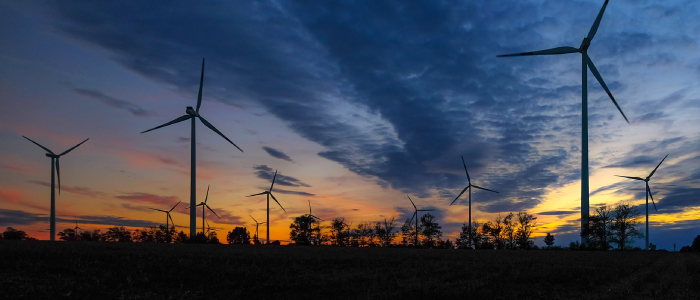
Wind farm operators need to find a balance between their projects generating maximum renewable power and minimizing their environmental impact. This is a common problem for wind farm operators when it comes to protecting bats. How do they make sure that they do this but also produce as much energy as possible at their wind farms?
One solution is blanket curtailment, but this causes large energy losses when the wind turbines power down, despite the absence of bats. Energy losses mean less power and less economic return from the wind farm sites.
So, we developed EchoSense® to solve this problem. EchoSense® provides an alternative to blanket curtailment. EchoSense® optimizes curtailment by curtailing only when bats are present and at risk of collision thereby recovering energy that is lost under blanket curtailment strategy. The journey to creating EchoSense® started in 2018, and you can read about that here.
EchoSense® is proven to increase wind energy output at wind farms
The EchoSense® validation test was carried out at Alliant Energy’s 170MW English Farms wind farm in Iowa, US. This was funded by the U.S. Department of Energy (DOE) with additional support from Alliant Energy and the Wind and Wildlife Research Fund (WWRF), in collaboration with the National Renewable Energy Laboratory (NREL), and under an endangered species research permit from the U.S. Fish and Wildlife Service (FWS).
Based on the results gathered from this full-scale deployment of the EchoSense® system and with the DOE monitoring our results, we have proven that EchoSense® increases wind farm energy output while also reducing the number of bat fatalities, which is of benefit to both project owners and wildlife.
How we tested EchoSense® against minimal and blanket curtailment to prove it works
Using three groups of 23 randomized wind turbines at the site so there was no location bias, we tested EchoSense® by comparing it with minimal curtailment and blanket curtailment.
For minimal curtailment the blades are pitched out below 3m/s, and for blanket curtailment the blades are pitched out below 6.9m/s (as dictated by the FWS Technical Assistance Letter, TAL). Using pitch control to adjust the blade angle (feathering) so the wind slips by rather than catching the blades reduces the rotation rate (RPM) of the blades, which is the key driver for reducing bat fatalities. RPMS <1 or 2 result in significantly fewer bat fatalities than RPM of three or more. Pitch control is used instead of using rotor brakes to reduce RPMS.
The results of the test showed that
- Minimal curtailment turbines experienced the smallest loss of energy production; however, the bat fatalities were the highest.
- TAL blanket curtailment turbines had the greatest loss of production and moderate levels of bat fatalities.
- EchoSense®curtailment turbines had an intermediate loss of production returning 40% of the production lost under the TAL and had the lowest level of bat fatalities.
For a wind farm of similar size with average wind conditions, using EchoSense® will increase energy production by more than 1% of the annual energy production (AEP). We’re already working on current upgrades to EchoSense® that will increase the energy production potential of wind farms even further, and we’ll be able to show these in our 2021 commercial deployment.
Ask us for a suitability analysis at your site to see if EchoSense® is right for your wind farm
The results of the test at English Farms wind farm in Iowa also validated our Suitability Analysis™ methodology. We carried out this assessment before the field test, to estimate the EchoSense®-driven energy recovery at the site as well as the return on investment (ROI). Using bat acoustic data and wind measurements from the site, we measured the impact of the different curtailment options, including EchoSense®, comparing their impact on energy loss and bat fatalities.
With the suitability analysis confirmed by the field test, we were able to feed that information into a financial model that effectively predicts the benefit that EchoSense® can bring. The suitability analysis informs the EchoSense® curtailment strategy that will best match a wind farm’s energy production and bat risk needs/expectation and generate a rapid ROI (<2 or 3 years).
Can EchoSense® make a difference to your wind farm project? Contact us at EchoSense@naturalpower.com to find out.
